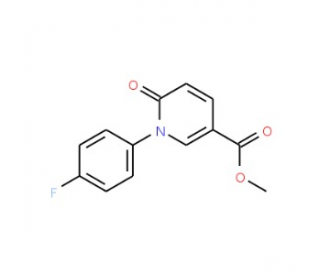详细说明
- Purity>95%, by SDS-PAGE under reducing conditions and visualized by silver stain
- Endotoxin Level<0.01 EU per 1 μg of the protein by the LAL method.
- ActivityMeasured by its ability to inhibit the TNF-alpha mediated cytotoxicity in the L‑929 mouse fibroblast cells in the presence of the metabolic inhibitor actinomycin D. Gileva, I.P. et al. (2006) Biochim. Biophys. Acta. 1764:1710. The ED 50 for this effect, in the presence of 0.25 ng/mL of rhTNF-alpha, is
0.6-2.4 ng/mL. - SourceMouse myeloma cell line, NS0-derived Ala23-Leu349, with a C-terminal 6-His tag
- Accession #
- N-terminal Sequence
AnalysisAla23 - Structure / FormDisulfide-linked homodimer
- Predicted Molecular Mass36.5 kDa (monomer)
- SDS-PAGE55 - 60 kDa, reducing conditions
| 4778-CR | | 4778-CR/CF |
| Formulation Lyophilized from a 0.2 μm filtered solution in PBS with BSA as a carrier protein. | Formulation Lyophilized from a 0.2 μm filtered solution in PBS | |
| Reconstitution Reconstitute at 100 μg/mL in sterile PBS containing at least 0.1% human or bovine serum albumin. | Reconstitution Reconstitute at 100 μg/mL in sterile PBS. | |
| Shipping The product is shipped at ambient temperature. Upon receipt, store it immediately at the temperature recommended below. | Shipping The product is shipped at ambient temperature. Upon receipt, store it immediately at the temperature recommended below. | |
| Stability & Storage: Use a manual defrost freezer and avoid repeated freeze-thaw cycles.
| Stability & Storage: Use a manual defrost freezer and avoid repeated freeze-thaw cycles.
|
Variola virus is the causative agent of human smallpox. Like other poxviruses, it encodes a variety of molecules that shield virus infected cells from immune clearance. The cytokine response modifiers CRMB, C, D, and E, which are differentially expressed among the poxviruses, function as decoy TNF receptors and block the proinflammtatory and antiviral effects of TNF (1, 2). Of the CRM proteins, Variola virus encodes only CRMB, secreted from virus infected cells as a 90 kDa disulfide linked dimer (3). The N-terminal 112 amino acid (aa) region of CRMB mediates binding to human, mouse, and rat TNF as well as human lymphotoxin-alpha, and neutralizes the cytolytic effects of TNF (3, 4). The C-terminal 155 aa region of CRMB, known as a SECRET domain (smallpox virus-encoded chemokine receptor), binds the chemokines CCL25, CCL28, CXCL12b, CXCL13, and CXCL14, which are involved in the antiviral immune response (4). Functionally, the SECRET domain interferes with the in vitro migration of T cells in response to CCL25 (4). A SECRET domain is also present in CRMD but not in CRMC or CRME. Variola virus CRMB shares 84% - 92% aa sequence identity with camelpox virus, cowpox virus, and monkeypox virus CRMB, but only 21% with vaccinia virus CRMB (which lacks a SECRET domain). The TNF binding domain of CRMB shares 30% and 42% aa sequence identity with comparable regions of human TNF R1 and R2, respectively.
- References:
- Johnston, J.B. and G. McFadden (2003) J. Virol. 77:6093.
- Massung, R.F. et al. (1993) Nature 366:748.
- Gileva, I.P. et al. (2006) Biochim. Biophys. Acta 1764:1710.
- Alejo, A. et al. (2006) Proc. Natl. Acad. Sci. 103:5995.
- Long Name:Cytokine Response-modifying Protein B
- Alternate Names:CRMB; G2R; G4R












